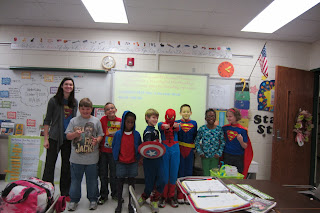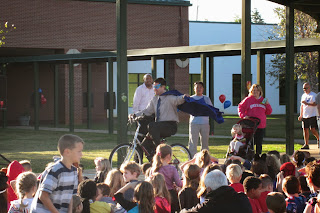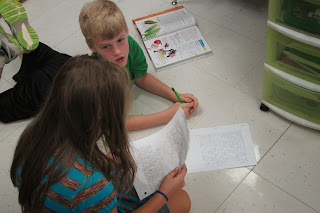Walk to School Week!
We had the chance to dress up every day this week and took full advantage of it! On Wednesday, we celebrated Walk to School Day with a guest speaker who talked about safety when walking or riding a bike, especially on Halloween, and athletes from Boiling Springs High School and Wofford College who shared what it means to be a hero.
We celebrated Muscle Monday by dressing like the Incredible Hulk.
On Telephone Booth Tuesday, we dressed like Clark Kent.
We dressed as our favorite superheroes for Walk to School Wednesday.
Our class made an awesome banner and everyone signed it!
Our guest speakers for the day.
Dr. Patterson and Mrs. Skinner are Oakland Superheroes!!
We had a lot of fun walking, and skipping, around the school!
We celebrated on Transport Leer Jet Thursday by dressing as Wonder Woman with wristbands, headbands, and red clothes.






































